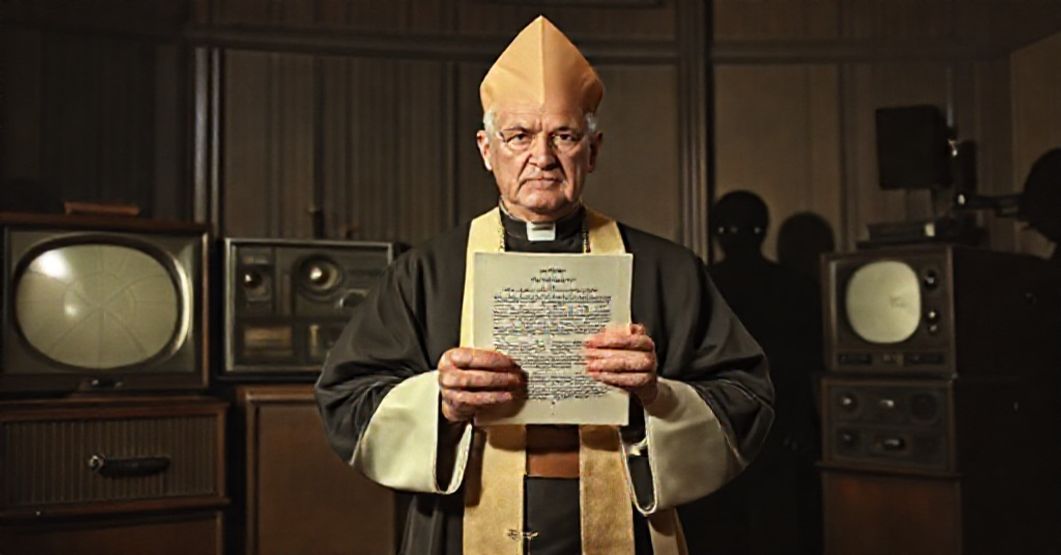Antipopes of the Antichurch



















Timeline of this heretical pontiff
Encyclical Letters
+ 15 posts1959
+ 7 posts1961
+ 4 posts1962
+ 2 posts1963
+ 2 postsApostolic Exhortations
+ 3 postsApostolic Constitutions
+ 93 posts1958
+ 6 posts1959
+ 87 postsMotu Proprio
+ 15 posts1958
+ 1 posts1959
+ 1 posts1962
+ 11 postsApostolic Letters
+ 151 posts1958
+ 4 posts1959
+ 63 posts1960
+ 78 posts1961
+ 1 posts1962
+ 4 posts1963
+ 1 postsSpeeches
+ 99 posts1958
+ 2 posts1959
+ 26 posts1960
+ 29 posts1961
+ 16 posts1962
+ 24 postsMessages
+ 6 posts1959
+ 4 postsHomilies
+ 4 postsLetters
+ 152 posts1958
+ 1 posts1959
+ 48 posts1960
+ 32 posts1961
+ 31 posts1962
+ 30 posts1963
+ 10 postsNot categorized
+ 1 posts1958
+ 1 postsNews feed


Qui huius saeculi (1959.03.23)
The document signed by John XXIII on 23 March 1959, under the title “Qui huius saeculi,” designates “Our Lady of Fatima” as principal patroness, together with Saint Dominic, of the diocese of San Domingo de Nueve de Julio in Argentina, praising the people’s attachment to the Fatima cult and solemnly granting them the corresponding liturgical privileges and canonical effects. It is a short juridical text, couched in exalted Marian language, whose entire theological and spiritual weight rests on the elevation of Fatima to a normative, quasi-dogmatic axis of diocesan life. This act is an emblematic manifestation of the incipient conciliar revolution: a pseudo-pontifical seal placed upon a manufactured apparition-cult, instrumentalized to prepare the demolition of the Catholic notion of the Church, authority, and the Kingship of Christ.


Celsitudo ex humilitate (1959.03.19)
The document “Celsitudo ex humilitate,” dated 19 March 1959 and signed by John XXIII, is an apostolic letter declaring Saint Lawrence of Brindisi a Doctor of the Universal Church. It presents a panegyric of Lawrence: his Franciscan and Capuchin vocation, his virtues, his preaching against heresy, his learning (especially in Scripture and languages), his diplomatic labours, and his service to the Holy See and Catholic princes. It insists that in times of doctrinal crisis God raises such men to defend the Church, and concludes by formally enrolling Lawrence among the Doctors of the Church with liturgical commemoration and juridical language guaranteeing the act’s validity.


Boni Pastoris (1959.02.22)
The text establishes the so-called Pontifical Commission for Cinematography, Radio and Television as a permanent organ of the Roman Curia, charged with guiding, coordinating, and influencing audiovisual media in accordance with the directives of Pius XII’s encyclical “Miranda prorsus” and subsequent prescriptions, supervising Catholic initiatives in film, radio, and television, and serving as a consultative hub for other dicasteries in all matters concerning these media. It presents itself as pastoral vigilance over powerful modern instruments, claiming to promote moral use of technology while centralizing oversight of communication.


Urbis Fori Livii (1959.01.16)
The text attributed to John XXIII, titled “Urbis Fori Livii,” announces that the church of St Mercurialis in Forlì, praised for its antiquity, architecture, post‑war restoration, and popular devotion, is elevated to the rank of minor basilica, with all the rights and privileges that follow from this dignity. It is a brief juridical-act style document: a few lines of historical-aesthetic admiration, a mention of veneration of St Mercurialis, the request of the parish priest supported by the local bishop, and the solemn conferral of the new title “in perpetuum,” sealed with the usual formulae of validity.
Already here the mask slips: behind ornate Latin compliments stands the cold apparatus of the conciliar sect, using traditional forms to consolidate its usurpation and to divert the faithful from the only question that matters — the integrity of the Faith and the true Church.
Varia
Announcement:
– News feed –implemented
– Antipopes separate web sites with their all documents refutation – in progress
